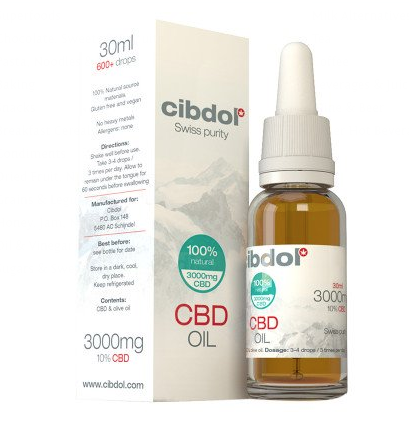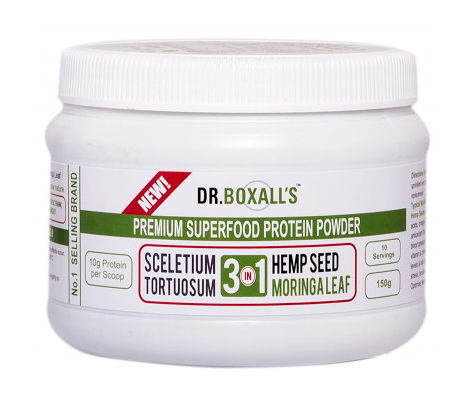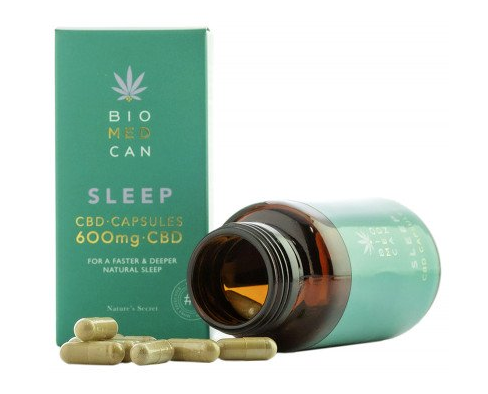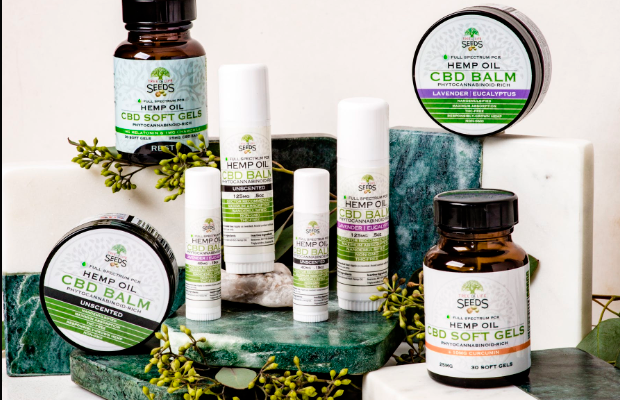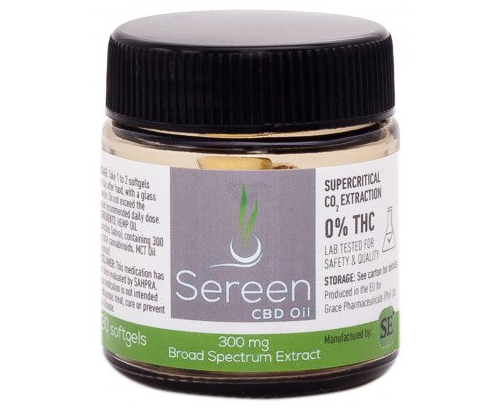Can CBD Improve Your Performance and Recovery?
We tapped experts and pro athletes to compile this complete guide to cannabis products for runners. (Spoiler: CBD is legal and won’t get you high.)
A natural alternative to ibuprofen. An antidote to anxiety. A sleep aid. A post-workout recovery booster.
Those are some of the claims about cannabidiol (CBD) oil. You will most certainly have heard about this cannabis extract, which is said to provide widespread health benefits without the drawbacks of marijuana.
A growing number of athletes, including many in the trail running and ultramarathon community, consider CBD a key part of their regimen. And because of these adopters, my interest piqued on CBD and its proposed benefits. Could CBD help my running? Can it help yours? I decided to find out.
But before we explore how runners and other athletes use CBD, here’s what you need to know.
What is CBD?
CBD is shorthand for cannabidiol, one of the more than 100 cannabinoids found in cannabis. CBD products are said to deliver their many claimed benefits by boosting the body’s endocannabinoid system, which is a system that “is a unique signaling pathway that controls the function of a variety of systems throughout the body, including the cardiovascular system,” says Nicholas DiPatrizio, Ph.D., a professor of biomedical sciences at the University of California, Riverside School of Medicine. (More on the endocannabinoid system later.)
Endocannabinoids are familiar to runners because of their theorised role in running-induced mood boosts. That euphoric phenomenon is thought to be from activation of the same receptors in the brain that the tetrahydrocannabinol (THC) in marijuana acts upon. CBD “works through distinct—albeit not definitively identified—signaling systems than THC,” DiPatrizio says. CBD is non-psychoactive, which means it doesn’t produce a high.
Here are some other common questions to think about:
Is CBD Legal?
Almost all commercially available CBD products are made from industrial hemp, a cannabis plant that, by definition, contains not more than 0.3 percent THC. In May 2019 cannabidiol was removed from from the list of highly controlled drugs. And until 15 May 2020 ‘preparations’ containing CBD will be legal to sell by anyone, not just pharmacies.
In terms of athletics, hemp-derived CBD was removed from the World Anti-Doping Agency’s list of prohibited substances in 2017.
Hemp legalisation and more companies targeting athletes should further separate CBD from its cultural association with marijuana.
How Do You Take CBD?
CBD products come in a variety of forms, including tinctures, gel caps, and topical applications. One US-athlete-focused company, Floyd’s of Leadville, offers a protein recovery powder and a carb drink that contain CBD. (That’s Floyd as in Floyd Landis, the former professional cyclist who was stripped of his 2006 Tour de France title for failing a drug test and who helped to expose Lance Armstrong’s doping.) Another athlete-focused company, PurePower Botanicals, offers capsules that combine CBD with herbs and other purported medicinals, such as turmeric. PurePower says that the non-hemp-derived ingredients increase the effectiveness of the products’ CBD.
What Claims Are Made About CBD?
Advocates say it helps with a wide variety of conditions, from anxiety and insomnia to inflammation and nausea. Because of the workings of the endocannabinoid system, there’s at least a theoretical basis for these claims.
“The endocannabinoid system is found in every organ throughout the body and controls many physiological processes, including food intake and energy balance, learning and memory, and pain processing, to name a few,” says DiPatrizio.
“It can affect everything from emotion to pain to appetite to energy metabolism to brain function to even the immune system and inflammation,” says Hector Lopez, M.D., a consultant to PlusCBD Oil. “When you have a system that crosstalks with all those pathways, then there are very few things the endocannabinoid system does not influence.”
So far, though, there’s scant clinical evidence for the claimed benefits of CBD. In June 2018, the Food and Drug Administration approved the first CBD drug, Epidiolex, for treating seizures associated with two rare forms of epilepsy. Otherwise, the FDA doesn’t consider CBD products to be dietary supplements—manufacturers can’t claim the products will diagnose, treat, or cure any diseases. Instead, CBD product literature contains phrases like “restore vitality,” “relax and recover,” and “may keep healthy people healthy.”
DiPatrizio says, “There may be some benefits outside of improving epilepsy outcomes, but a lot more research is required.” Any research on athletic claims would almost certainly come from the industry; there are more urgent public health CBD topics to investigate than whether it reduces runners’ knee pain. For the foreseeable future, runners interested in CBD’s effectiveness will have to rely on anecdotal, subjective reports.
What Are Athletes’ Experiences With CBD?
Some of those anecdotal reports are impressive. One of my training partners, Erin Dawson-Chalat, M.D., of Cape Elizabeth, Maine, says that her persistent plantar fascia pain went away within a few days of applying topical CBD balm to the area.
RELATED: Plantar Fasciitis: Symptoms, Treatment & Exercises
Like many athletes I’ve spoken with, Dawson-Chalat appreciates that CBD is a natural product.
“I don’t like to take stuff like ibuprofen or prescription medications,” says Andrew Talansky, a professional triathlete from Napa, California, who, as an elite cyclist, rode in the Tour de France. “I’m always looking for natural alternatives.” When Talansky heard an increasing number of athletes talking about CBD, “I went from skepticism to being interested to asking advice on how to use it,” he says.Talansky says that his sleep improved almost immediately when he started taking CBD daily. Soon after, he was also less anxious about transitioning from pro cycling to his new sport, felt that he recovered more quickly from hard training, and had fewer flare-ups of his old cycling injuries. Now he encourages other athletes to try CBD, in part “to get rid of the association with smoking weed,” he says. “It’s completely different.”
Elite ultramarathoner Avery Collins doesn’t mind any associations with marijuana; his Instagram handle is @runninhigh. But he also takes CBD daily, despite some of its claimed benefits overlapping with those attributed to marijuana.1
“THC products are more for the psychoactive effect, which may not be for everyone,” the Steamboat Springs, Colorado, resident says. “CBD use is for more health-minded people.” Collins says CBD products “are a big part of my daily routine,” and credits them with boosting his energy levels, speeding his recovery from long trail runs, and improving his sleep.
My Trial With CBD
Given reports like these, I decided to conduct an (admittedly flawed) experiment of one: For one month, I would take CBD daily while changing nothing else—mileage, intensity, strength training, other aspects of self-care—in my routine.
What did I experience? As was the case for Talansky, my sleep improved almost immediately. It wasn’t that I slept more; I felt like I slept better—more soundly, less waking during the night, more often getting out of bed feeling refreshed. By the second week, I noticed less overall creakiness while going about daily activities; CBD advocates would say the products had lowered systemic inflammation. Those two changes made me feel like I was recovering better from training, which led to being more eager to train, and feeling better while doing so.Most acutely, the discomfort and stiffness I’d felt for months from a meniscus tear (confirmed by MRI) went away. The occasional twinges I had been getting on runs stopped. More significantly, what had been the tear’s near-constant presence in daily life, such as when getting up from sitting, has disappeared. For now, I’ve postponed surgery on the tear. It’s impossible to know if CBD was the key factor in any of these changes. Still, at the end of the month, I decided to keep taking CBD daily.
All that said, CBD isn’t an athletic cure-all. After my initial month-long experiment, I wrenched my lower back while lifting weights. Increasing my CBD intake, primarily through frequent self-massage with salves and creams, didn’t seem to help. Rest and prescription muscle relaxants were the keys to resuming normal activities, including running.
RELATED: What’s The Difference Between Rest & Active Recovery?
My experience meshes with how some health professionals who work with athletes view CBD.
Dan Frey, a physical therapist in Portland, Maine, says that his patients report the most success using CBD to treat long-term trouble spots rather than acute injury sites. Frey, who doesn’t prescribe medication or supplements, says his conversations about CBD are initiated by patients. Many also tell Frey they find it helps with pain management, especially when used in conjunction with other treatments such as massage and a targeted strengthening and mobility programme.
“CBD coupled with stretching, icing, and foam rolling is a common treatment plan for tendonitis injuries about the knee, such as iliotibial band syndrome,” says Charles Bush-Joseph, M.D., a professor of orthopedics at Rush University Medical Center in Chicago. “Many patients like the fact that CBD is a natural substance. While specific research on the use of CBD in this instance is lacking, many believe that it helps prevent muscle and collagen breakdown.”
RELATED: The Foolproof 3-Step Plan For Treating ITB!
How Should You Take CBD?
Runners pushing themselves daily might want to try more. Floyd’s of Leadville owner Bob Bell says that the company’s 50-milligram soft gels are its top seller. Talansky says his baseline is a 25-milligram gel, plus applying a strong topical cream three to five times a day if a specific body part is bothering him. He takes more on his hardest training days to speed recovery.
How much is too much? Lopez says no significant adverse reactions have been reported for the more than 1 million doses that have been sold in the United States. There is, however, a personal threshold at which the products stop being effective, and maybe even become less effective.
I found I was too groggy during work hours if, on a typical day, I took CBD in the morning and at night. A dose of 25 milligrams an hour before going to bed, plus occasional topical use, has become my norm. The main exception is after an especially long or hard weekend run when I have an additional 25 milligrams if I’m planning to mostly lounge about the house.
Lopez recommends that most people start with a pre-bed dose. Capsules allow you to know exactly how much you’re taking at once. Tinctures, which are the industry’s sales leaders, allow you to customize a day’s dosage.
What Should You Look for When Buying CBD Products?
Knowing how much CBD you’re taking can take a little math. Again, capsules are straightforward—the bottle will say how much CBD each one contains. For tinctures, you need to know the total amount of CBD in the container and the container’s size to calculate how much CBD is in each serving. I found 1-ounce tincture bottles, which contain roughly 30 servings, that ranged from containing 100 milligrams of CBD to 1,000.
Look for what are known as “full-spectrum” CBD products. These products contain other compounds of the hemp plant in addition to CBD. It’s believed that the compounds work together to provide the claimed benefits, much as eating an orange is usually a better choice than drinking orange juice. One key exception is if you’re subject to workplace drug testing. A CBD isolate, in which the rest of the plant’s compounds are removed, should reduce the already tiny chance of trace amounts of THC being present.High-quality products will list their ingredients on the label. Reputable brands pay for third-party testing to ensure products contain the claimed amount of CBD. You should be able to find test results on a brand’s website.
Products that meet these criteria are more likely to be on the expensive end of the industry spectrum. Less expensive products are more likely to contain fillers, such as olive oil in tinctures.
What Is the Future Of CBD?
One of the biggest stumbling blocks to widespread use of CBD is price. High-quality tinctures are expensive.
Landis expects prices to come down 10 to 20 percent over the next few years. The biggest reason is that, thanks to legalisation, hemp cultivation is likely to dramatically increase. CBD manufacturers’ raw material expenses will drop significantly once enough farmers figure out how to profitably grow hemp, says PurePower CEO Don McLaughlin.
Because of legalisation, McLaughlin expects national chains to start offering CBD. Clicks, Dis-Chem and Medrite (Checker’s Pharmacy) are already stocking CBD products.
McLaughlin and other current CBD entrepreneurs think there’s room for small and large brands. Prevail CEO Brock Cannon says, “I don’t think there’s an advantage in trying to be everything to everyone. We’re going to make products we would want as runners. Like it would be cool to have a CBD shot block to take on the trail.”
Runners may soon find such products as normal as energy gels.
This article originally appeared on runnersworld.com.
Runner’s World participates in various affiliate marketing programmes, which means we may get commissions on editorially chosen products purchased through our links to retailer sites.
READ MORE ON: cbd health injury-prevention supplements


